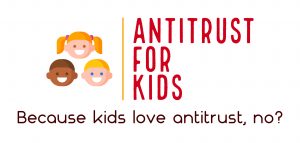Author: Luis Blanquez
In simple terms algorithmic pricing takes place when competitors make use of a software platform to share competitively sensitive information, which the pricing algorithm uses to recommend prices for all users.
Algorithmic pricing has been in the antitrust spotlight over the past few years.
The FTC has Algorithmic Price-Fixing in its Antitrust Crosshairs
New Antitrust Cases and Statements of Interests About Algorithmic Collusion
The main reason? Antitrust laws apply to algorithms implementing human agreements.
How to Show the Existence of an Agreement: Direct and Circumstantial Evidence
Remember that under US antitrust law, there are two ways to show the existence of an agreement:
- Through direct evidence (sometimes this is a “smoking gun”), and;
- Through circumstantial evidence: Alternatively, it’s more common to show the existence of an agreement through a combination of parallel conduct and “plus factors,” i.e., a common motive to conspire, evidence that shows that the parallel acts were against the apparent individual economic self-interest of the alleged conspirators, and/or evidence of a high level of interfirm communications.
But finding an express agreement between companies to fix prices is not super common these days. So, what happens when there is no agreement involved, and the algorithm “only” facilitates tacit collusion between the companies using it? Things get much murkier. That happens, for instance, when competitors use the software platform to share sensitive commercial information.
Agreements to Exchange Information: “Per Se” or Rule of Reason?
Section 1 of the Sherman Act prohibits every contract, combination or conspiracy that restrains trade, so long as those restraints are unreasonably restrictive of competition in a relevant market. This includes both an agreement and tacit collusion.
Restraints analyzed under the “per se” rule are those that are always (or almost always) so inherently anticompetitive and damaging to the market that they warrant condemnation without further inquiry into their effects on the market or the existence of an objective competitive justification. Business practices considered per se illegal under antitrust laws include: (a) horizontal agreements to fix prices, (b) horizontal market allocation agreements, (c) bid rigging among competitors; (d) certain horizontal group boycotts by competitors; and (e) sometimes tying arrangements.
On the other hand, a contract, combination or conspiracy that unreasonably restrains trade and does not fit into the per se category is usually analyzed under the so-called rule of reason test. This test focuses on the state of competition within a well-defined relevant agreement. It requires a full-blown analysis of (i) definition of the relevant product and geographic market, (ii) market power of the defendant(s) in the relevant market, (iii) and the existence of anticompetitive effects. The court will then shift the burden to the defendant(s) to show an objective procompetitive justification. Most antitrust claims are analyzed under this test.
Depending on the type of unlawful information exchange, it might be categorized as:
- “Per se”unlawful conduct, when facilitates price fixing, bid rigging, or market allocation, so plaintiffs do not need to show actual harm to competition, or;
- Unlawful conduct under the rule of reason, if the exchange of information leads to some anticompetitive effect, based on factors such as the structure of the industry involved, and the nature of the information exchanged, among others.
This is an important distinction to keep in mind if you want to understand why the District Court for the Western District of Washington in Duffy v. Yardi Systems Inc. recently denied the defendants’ motion to dismiss, while stating—for the first time involving an antitrust case on algorithmic pricing—that plaintiffs’ allegations were sufficient to allege a per se unlawful antitrust conspiracy.
New Legal Standard for Algorithmic Pricing Antitrust Cases? Maybe…
We’ve seen several government and private antitrust lawsuits on algorithmic pricing during the past years, claiming that the use of a software platform to set prices constituted an anticompetitive conspiracy under the antitrust laws.
We’ve previously discussed all these cases in detail here. In a nutshell:
- In 2022 plaintiffs in Realpage, Inc. Software Antitrust Litigation sued RealPage and its landlord-customers alleging that a management software tool helped them coordinate on prices by collecting non-public information on rents and vacant units. In January 2024, the Court denied the motion to dismiss––plaintiffs were able to show that RealPage’s software uses confidential competitor information through its algorithm to spit out price recommendations based on that private competitor data.
Second, it rejected claims alleging a horizontal price-fixing conspiracy (no agreement and no absolute delegation of their price-setting to RealPage) ––which would have been “per se” illegal––but concluded that those same landlords vertically conspired with RealPage.
- In 2023, plaintiffs in Gibson v. MGM Resorts International and Cornish-Adebiyi v. Caesar’s Entertainment, Inc., alleged that hotels in Las Vegas and Atlantic City used a pricing algorithm to facilitate collusion, by providing hotel and casino room pricing and occupancy information. The district courts dismissed both cases, on May 8 and September 30, 2024, respectively, based on several grounds. First, plaintiffs did not show a horizontal agreement: the hotels were not using the platforms around the same time, did not agree to be bound by such price recommendations, and did not charge the same prices. And second, plaintiffs failed to show that the pricing recommendations were based on nonpublic, competitively sensitive information.
- In Duffy v. Yardi Systems, Inc. plaintiffs similarly alleged that competing landlords violated Section 1 of the Sherman Act, by unlawfully agreeing “to use Yardi’s pricing algorithms to artificially inflate” multifamily rental prices. On December 4, 2024, the court denied the motion to dismiss and allowed the case to proceed into discovery. There are two important nuances to highlight here.
First, and similarly to the RealPage case, the Court sided with plaintiffs and agreed on the existence of an antitrust conspiracy. This decision was not only based on defendants’ acceptance of Yardy’s invitation to trade sensitive information, which allow them to charge increased rents, but also on defendants’ parallel conduct (while contracting with Yardi), and “plus factors,” such as the exchange of nonpublic and competitive sensitive information, which suggested defendants acting for their mutual benefit.
 The Antitrust Attorney Blog
The Antitrust Attorney Blog












